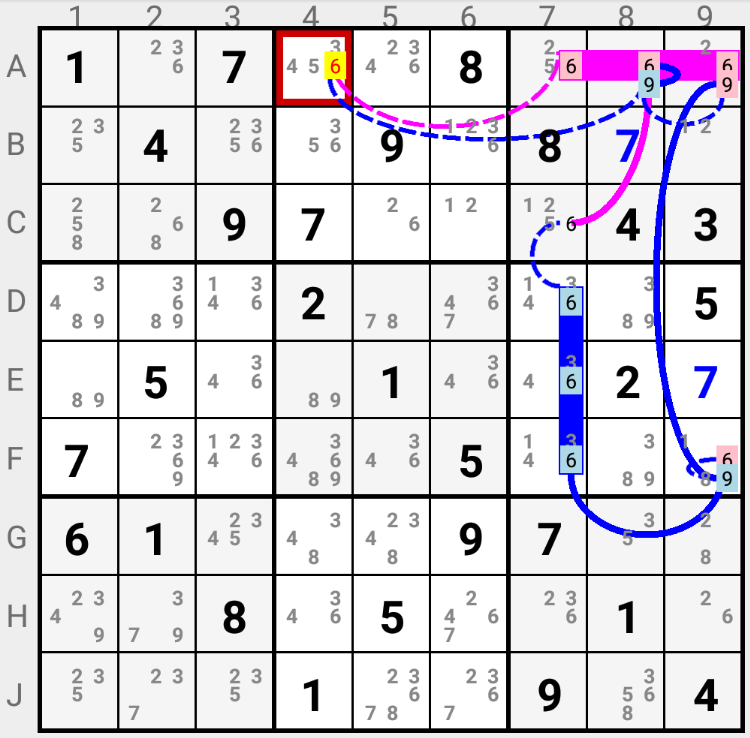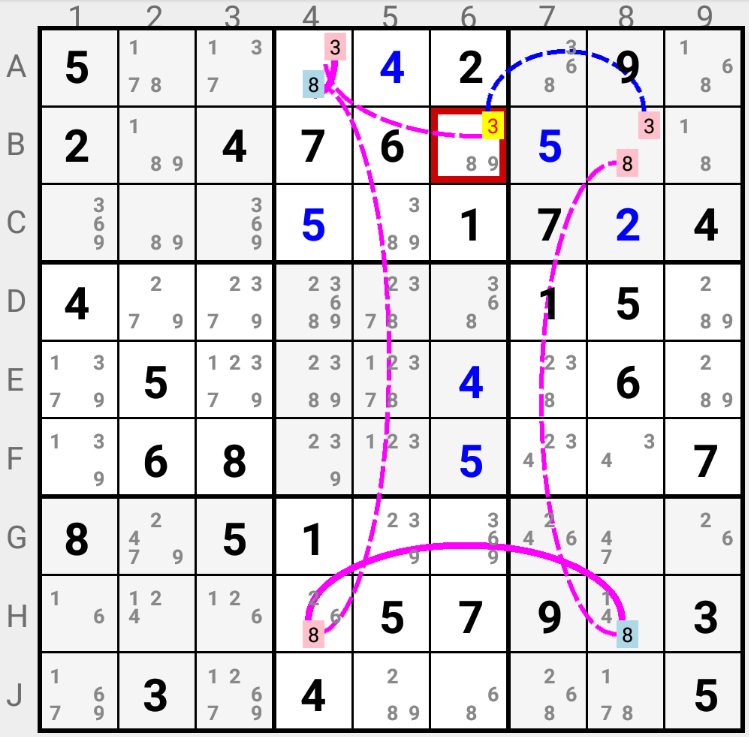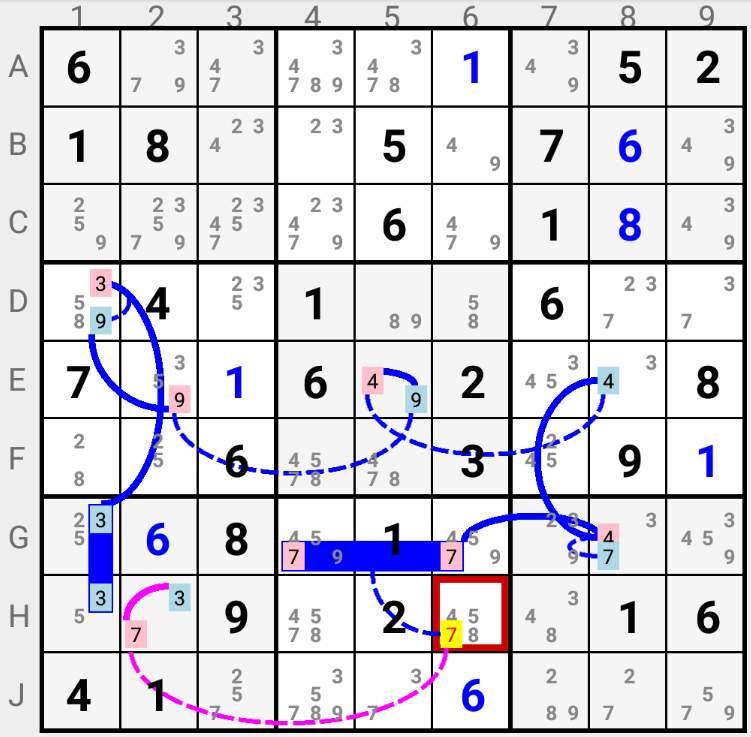Nishio Forcing Chains
In the Nishio Forcing Chain strategy we build two independent chains alternating Strong Links (also see note at the bottom of this page) and Weak Links starting from a single candidate in a particular Cell. Both chains start with the candidate "ON".
NISHIO FORCING DIGIT Type 1 (same candidate both "ON" and "OFF") : the two chains meet in a Cell with the same candidate in different states. As the same initial assumption can not lead to contradictory conclusions, the candidate at the start of the chains can not be the solution for that starting Cell.

In this example assuming that candidate 6 is the solution in A4 leads to a contradiction: the blue Chain implies that candidate 6 can not be the solution in C7 while the pink Chain implies that candidate 6 must be the solution in C7. Hence the initial assumption is wrong: candidate 6 can not be the solution in A4 and it can be eliminated in that cell.
NISHIO FORCING DIGIT Type 2 (emptying a cell) : the two chains meet in a "Bi-Value" Cell with both candidates "OFF", leaving this Cell "empty". Hence, the candidate at the start of the chains can not be the solution for that starting Cell.

In this example assuming that candidate 3 is the solution in B6 leads to a contradiction: if candidate 3 is the solution in B6 then candidate 3 can be eliminated in B8 (blue Chain) while the pink Chain implies that candidate 8 can not be the solution in B8. B8 would have no solution. Hence the initial assumptiion is wrong: candidate 3 can not be the solution in B6 and it can be eliminated in that cell.
NISHIO FORCING DIGIT Type 3 (two candidates "ON" in a region) : the two chains set the same candidate "ON" in two different Cells of the same region (Row, Column or Square). As a particular candidate can be the solution in only one Cell of a region, the initial assumption is wrong. Hence, the candidate at the start of the chains can not be the solution for that starting Cell.

In this example assuming that candidate 7 is the solution in H6 leads to a contradiction: the blue Chain implies that candidate 3 must be the solution in either G1, or H1, while the pink Chain implies that candidate 3 must be the solution in H2. Candidate 3 would be the solution in two different cells of Square 7 which is not possible. Hence the initial assumption is wrong: candidate 7 can not be the solution in H6 and it can be eliminated in that cell.
NISHIO FORCING DIGIT Type 4 (emptying a region) : the two chains set all occurrences of a candidate "OFF" in a region (Row, Column or Square). As a particular candidate must be the solution in one Cell of a region, the initial assumption is wrong. Hence, the candidate at the start of the chains can not be the solution for that starting Cell.
In this example assuming that candidate 4 is the solution in C2 leads to an impossibility: the blue Chain implies that candidate 8 must be removed from E3, while the pink Chain implies that candidate 8 must be removed E7 leaving Row "E" without any possible solution for candidate 8, which is not possible. Hence the initial assumption is wrong: candidate 4 can not be the solution in C2 and it can be eliminated in that cell.
NB: more formally, a Strong Link is the relationship that exists between two Cells in a region (Row, Column or Square) when these two Cells are the only Cells in that region
that contain a particular candidate: if the candidate is not the solution for the first Cell, then it must be the solution for the second Cell, and vice-versa.
However, in the Chaining Strategies, we consider Strong Links as links going from a Cell or a group of Cells
where we assert the candidate is not the solution (we say the candidate is in the "OFF" state)
to a Cell or a group of Cells where it then must be the solution (we say the candidate is in the "ON" state).
If we consider a Bi-Value Cell, asserting that one of its candidates is not the solution implies that the other candidate must be the solution.
Hence there also exists a Strong Link between the two candidates of a "Bi-Value" Cell.
A Weak Link as a link going from a Cell/group of Cells where the candidate is "ON" to a Cell/group of Cells where it is "OFF".
You can practice this strategy by installing the SudokuCoach application on your Android™ device.
